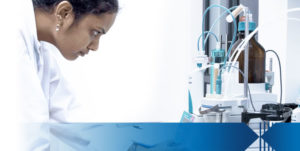Drug manufacturing technology transfer is one of the most complicated and demanding processes in the drug company-contract development organization relationship. There is one overriding deliverable that must go right – the scaled-up successful production of a drug. However, there are countless things that can go wrong during the course of the scale-up.
 Pharmaceutical API transfers to the commercial scale can frequently stretch a year or more, often due to the involvement of regulatory agencies.
Pharmaceutical API transfers to the commercial scale can frequently stretch a year or more, often due to the involvement of regulatory agencies.
In a noteworthy piece at PharmTech (Tech Transfer: Tearing Down the Wall), Agnes Shanley discusses the growing integration of the technology transfer process with other pharma company resources and assets.
Where a few decades ago, research department staffers might speak glibly of throwing a process “over the wall” from R&D to scale-up and manufacturing, today most organizations realize how wasteful that approach has been and are approaching tech transfer in a much more systematic and collaborative way. Cross-functional teams are usually the rule, with representatives from each major operational group (e.g., quality, business, research, and operations) at the sponsor group taking an active role in moving projects forward.
Some of this evolution has come about by virtue of changes or developments in the broader pharma industry. Technology has played a role in bringing historically removed teams closer together. Regulatory demands as well as an increasingly data-driven environment have also pushed pharma tech transfer towards close coordination with other groups or teams.
Inter-Departmental & Cross-Company Collaboration
This is true for us at Neuland, as well. Tech transfer and scale-up are a key part of what we do. Our tech transfer team coordinates closely with scientific research teams, scale-up engineers, quality, process development, EHS and more.
In a blog post on Quality By Design, we discussed how Neuland leverages QbD to bring together a collaborative and inclusive team comprised of both chemists & engineers to ensure a successful API scale-up. QbD is a valuable tool when evaluating “what-if” drug scenarios.
In another earlier post on the subject (Leveraging QbD for API Scale-Up) we explained how QbD enables robust technology development & transfer to manufacturing:
“With cause & effect analysis of Critical Process Parameters (CPP) on Critical Quality Attributes (CQA), QbD also aids in robust technology development & transfer at manufacturing plants. In order for QbD to aid in scale-up, an appropriate control strategy needs to be in place to ensure a focus on critical points.”
While transfer complications can (and sometimes do) emerge with a drug’s API synthesis technique at larger scales, they are easier to address when multidisciplinary teams approach the challenge with their collective knowledge and skillsets.
 Informed Decision-Making
Informed Decision-Making
The era of siloing operations, hoarding data & know-how, and proverbial Chinese walls between teams is long-past over. Technology has provided us with a new creed: efficient collaboration.
Smart pharma tech transfer teams tasked with the challenge of designing a product’s course through scale-up need maximum access to information and expertise. This allows them to make the most accurate decisions possible to ensure a candidate or drug’s success.
Tech Transfer – Start Early
Many pharma professionals would argue that the tech transfer phase is the perfect time to address scale-up issues, but this can negatively impact the opportunity to streamline scale up and tech transfer operations.
Ideally, scale-up issues would be analyzed and addressed during process development. After all, what’s the feasibility of a process that would require 8 million liters of acetone and 113 weeks to yield 1/100th of a 50 milligram dose of product?
Invention at the bench does not necessarily translate to practicable commercial-scale manufacturing. Thinking about these issues early during process development helps address product viability proactively, rather than reactively.
As a contract API manufacturer, we see a surprising number of companies who still view tech transfer as “where you shake out all the process issues.”
The biggest challenge with this mindset? It usually means inadequate or partial knowledge transfer.
This commonly leads to project delays as additional work must be performed to fill in any knowledge gaps. In some cases, we are able to fill those gaps with our own collective experience working across a range of APIs and therapeutic classes.
Find & Fix Formulation Issues Before Scale-Up
Joseph Szczesiul of UPM Pharma discussed the need to get it right early and avoid reformulation during tech transfer at PharmTech:
“The best foundation for tech transfer success is complete formulation and process development. You cannot correct formulation deficiencies during tech transfer, and process optimization can only provide limited improvement. An inadequate enteric coating, for example, or a wet granulation with insufficient binder, can only be improved incrementally by process changes. The big fix comes from formulation change, which needs to be done early in the development process.”
This is why it is so important that there should be constant, ongoing discussion as well as information review & sharing with clients. As our knowledge of their product and process increases, we must effectively communicate this information to the client.
The Bottom Line
Effective technology transfer requires comprehensive information about the process in question…and cross-functional teams are the answer. Bringing the collective wisdom and capabilities of multiple departments together to solve tech transfer challenges should be a no-brainer.










